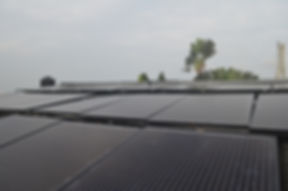
Imagine hosting a big party at your home. The moment when everyone arrives at once is like your household's "peak load." During this time, your home demands the most resources, food, drinks, space to ensure everyone is comfortable and entertained. Similarly, peak load in an energy context refers to those periods when your household requires the most electricity, typically when everyone is at home, cooking, washing, and using electronics.
For homeowners relying on solar energy, managing peak load is crucial. Your solar panels and inverter system must work efficiently to meet this heightened demand, ensuring you have a seamless and uninterrupted power supply. In this post, we’ll explore why understanding peak load is vital for your solar system, how to overcome related challenges, and what you can do to secure reliable energy for your home or business.
Why Peak Load Matters in Solar Energy Systems
1. Energy Demand During Peak Hours
Peak load times usually occur in the evening when everyone is home, using appliances, lighting, and entertainment systems simultaneously. This surge in demand can strain your solar system if it’s not adequately designed or maintained. If your system can’t handle the peak load, you may experience power shortages, forcing you to rely on the grid or backup generators, which can be costly and less sustainable.
2. Solar Panel Efficiency During Peak Load
Your solar panels are most effective during daylight hours when they can absorb maximum sunlight. However, peak load times often coincide with reduced sunlight, especially in the evenings. This discrepancy between when energy is produced and when it’s needed most can pose a significant challenge. A well-designed system with high-efficiency panels and an appropriately sized inverter can help bridge this gap by maximizing energy capture during the day and ensuring enough power is stored for peak times.
How to Overcome Peak Load Challenges
1. System Design for Peak Efficiency
One of the most effective ways to combat peak load issues is by designing your solar system to meet your specific energy demands. This involves selecting the right size and type of solar panels, batteries, and inverters that can handle your peak load. High-efficiency panels and inverters that can manage surges in demand are crucial for ensuring a consistent energy supply during peak times.
2. Energy Storage Solutions
To ensure you have enough power during peak load times, consider integrating a battery storage system with your solar setup. Batteries store excess energy generated during the day, which can be used when demand is highest. Advanced lithium-ion batteries, for instance, offer higher storage capacity and longer life cycles, making them an excellent choice for managing peak loads. This not only secures your energy supply but also reduces your reliance on the grid, providing cost savings in the long run.
3. Load Management Strategies
Effective load management is another strategy to address peak load challenges. This involves optimizing the timing of energy use in your home. For instance, you can schedule energy-intensive tasks like laundry, dishwashing, and charging devices during off-peak hours when your energy demand is lower. Smart home systems can automate these processes, ensuring that your energy consumption aligns with your solar production and storage capabilities.
4. Regular Maintenance and Monitoring
Keeping your solar system in top shape is essential for handling peak loads efficiently. Regular maintenance, including cleaning your panels, checking for wear and tear, and ensuring your inverter is functioning correctly, can prevent unexpected breakdowns during high-demand periods. Additionally, monitoring systems allow you to track your energy production and usage in real-time, helping you identify and address potential issues before they escalate.
Securing Your Solar Investment: Long-Term Considerations
Investing in a solar system is a long-term commitment, and understanding how to manage peak loads is key to protecting that investment. By ensuring your system is designed, installed, and maintained with peak load demands in mind, you can enjoy a more reliable and cost-effective energy solution.
Moreover, as energy needs evolve, perhaps with the addition of electric vehicles or new appliances, it’s essential to reassess your system’s capacity to handle increased peak loads. Future-proofing your system by choosing scalable solutions can save you time, money, and energy in the long run.
Smart Planning Equals Secure Energy
Managing peak load is not just about preventing power outages; it’s about maximizing the efficiency and reliability of your solar energy system. By understanding your peak load requirements, choosing the right components, and implementing effective load management strategies, you can ensure that your system delivers consistent, reliable power when you need it most.
In the growing solar market, particularly in regions like Nigeria where power reliability is critical, being proactive about peak load management is a smart move. It secures your energy supply, protects your investment, and contributes to a more sustainable and self-sufficient future.
So, as you plan or upgrade your solar system, remember that peak load management is not just a technical detail, it’s the key to unlocking the full potential of your solar energy investment.
Get in touch now: https://wa.me/+2349093194199

